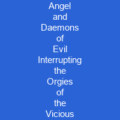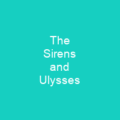Britomart Redeems Faire Amoret: A Masterpiece of Victorian Art
Imagine a painting that captures the essence of heroism, redemption, and the struggle between good and evil. That’s what William Etty’s Britomart Redeems Faire Amoret is all about.
The Artist and His Time
William Etty was born in 1787, a time when art was both a reflection of society and a means to challenge it. He showed artistic promise from an early age and studied under the renowned Thomas Lawrence at the Royal Academy Schools.
The Controversy
Etty’s paintings often featured nude figures, which caused quite a stir due to the Proclamation for the Discouragement of Vice. But in 1833, when he exhibited Britomart Redeems Faire Amoret, it was met with critical acclaim and no controversy.
The Painting: A Tale of Valor and Virtue
Britomart Redeems Faire Amoret is a powerful depiction of a scene from Edmund Spenser’s The Faerie Queene. In this painting, the female warrior Britomart slays the evil magician Busirane to free his captive, the beautiful Amoret. The moment captures the essence of valor and virtue.
Etty’s Vision
Etty painted Amoret as unharmed but with sadistic torture and occult sorcery implied in his composition. This painting was not just a visual narrative; it was a challenge to male viewers to vanquish lust, praising chastity and honour.
The Reception
Despite the violent and sexually charged elements of the painting, critics praised its color and poetic character. Etty considered it one of his major works and sold it for £157 in 1833. It was later sold to Lord Charles Townshend for 520 guineas in 1849.
A Journey Through Time
From its first exhibition at the Royal Academy in 1833, Britomart Redeems Faire Amoret has had a fascinating journey. It passed through several hands before entering the collection of the Lady Lever Art Gallery and eventually Tate Britain.
Influence and Legacy
The painting influenced John Everett Millais’s 1870 The Knight Errant. In 2013, Franco Moretti argued that Britomart Redeems Faire Amoret was a “prototypical” example of the Victorian nudes, where nudity symbolized coercion of women by savages, criminals, and tyrants.
Exhibitions and Recognition
The painting has been exhibited at the York Art Gallery as part of a major retrospective of Etty’s work and has been included in the Exposed: The Victorian Nude exhibition. It continues to captivate audiences with its intricate details and powerful message.
A Masterpiece for the Ages
Britomart Redeems Faire Amoret is more than just a painting; it’s a testament to William Etty’s skill, his vision, and his ability to challenge societal norms. It stands as a reminder of the enduring power of art to inspire and provoke thought.

You want to know more about Britomart Redeems Faire Amoret?
This page is based on the article Britomart Redeems Faire Amoret published in Wikipedia (retrieved on November 29, 2024) and was automatically summarized using artificial intelligence.







